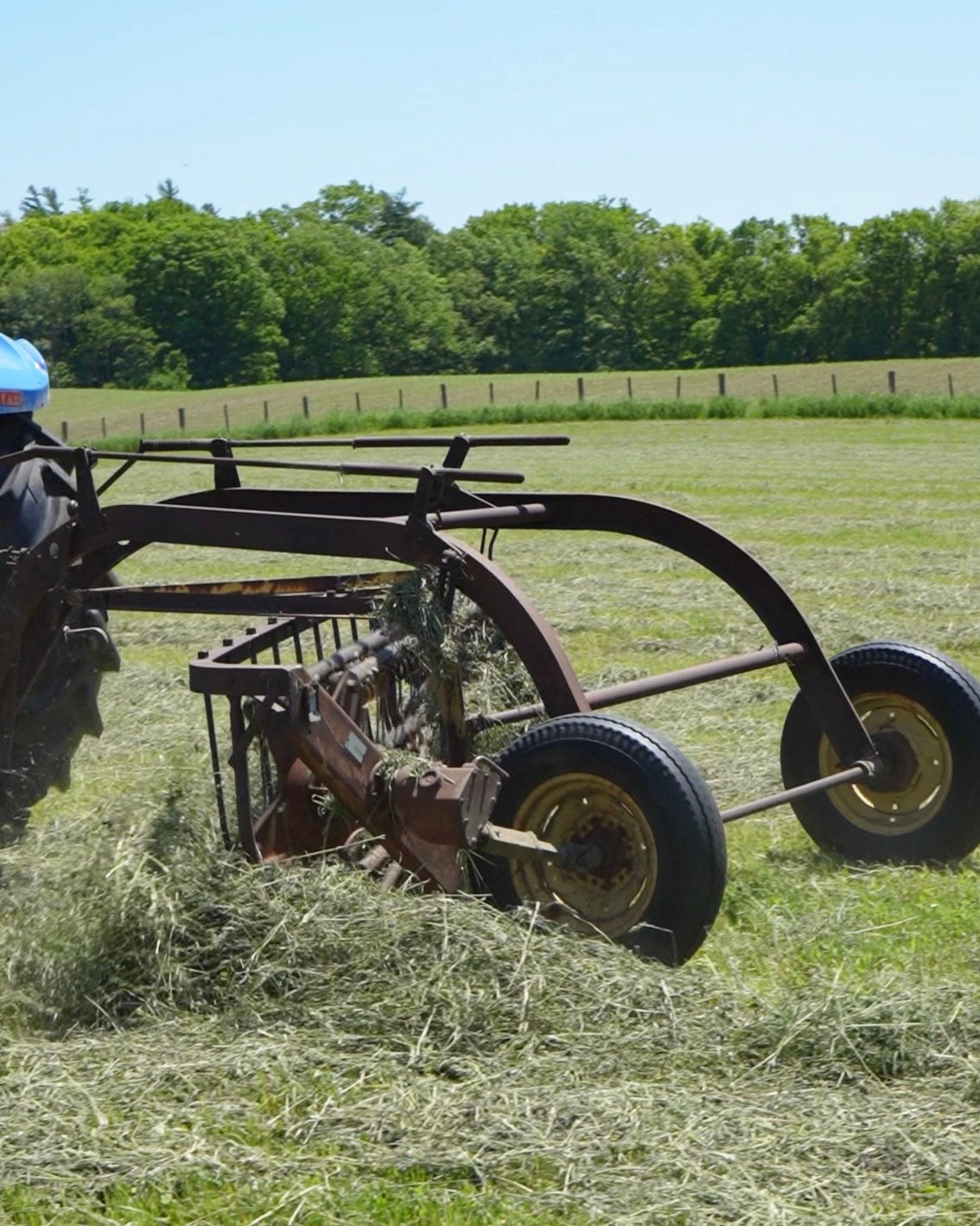
Cruickston Park has been operating as a farm since before 1806 (census records);
We continue the tradition of producing hay in our fields to feed our animals and to create ‘good’ carbon to feed and nurture the biome underlying the ground’s surface. The way we accomplish this is we fertilize our fields with ‘live’ fertilizer from our animals (as opposed to buying mineral fertilizers, considered inorganic or ‘dead’ fertilizers because they deplete the biome).
The more varied kinds of animals, the more complex and beneficial the fertilizer. Currently Cruickston Park raises 7 different species of farm animals for manure that is composted in the sun before its put back onto the land. The heat naturally generated from compost kills off pathogens. Ideally this system of using live fertilizer forms a closed loop that doesn’t require external inputs sourced off property.

‘Terroirs’, or closed farming systems, are the most healthful in every respect as they produce the most nutritious output which, in turn, produce healthy plants, healthy animals, healthy people. Nutrition can be measured using a brix refractor measuring naturally occurring sugar crystals in plants. At Cruickston Park our main measure is soil quality as soil is foundational in our goal of creating quality production. Closed farming systems used to be the norm in Canada, but has become a rarity in two short generations with the advent of mono farming.
Variation is also important in growing nutritious hay. We grow a variety of plants and herbs with both the health of our land and our animals in mind. We apply the same philosophy in selecting our pasture mix.
Over time we have observed unexpected patterns from plants. For instance we found some plants will colonize: the brassica’s we planted formed circle groups of about 20’ in diameter. We also discovered mustard to root into brassica root systems, likely as an additional source of nutrition. Although their movement is slower and more difficult to detect, our experience is plants appear to be intelligent.
Our farming system has resulted in unexpected animal behaviour: One winter we observed our steer cross-crossing the pastures in search of food, and preferred to do this than eat the hay available to them. We discovered them eating discarded pine trees we provided (Vitamin C), they sourced their own water, and they also dug out a large patch of rutabaga’s and radishes we had planted for them the previous summer. They made it through that season fatter, with shiny, full coats, smelling like horse radish. We realized animals will fulfill their own nutritional needs when given the opportunity.
Cruickston Park’s hay production is a process that repeats itself throughout the growing season, weather dependent. Prior to the hay flowering (its peak of nutrition) it is cut and left to dry on the field. The hay is flipped to dry on both sides before it is raked into rows. A bailer passes over the rows and forms the hay into large bails. Round bailing can be performed by one person, as opposed to large crews of people required in the production of small bales. Previous to small bale production, hay used to be collected and stored loosely in a hay loft.
Cruickston Park has been a continuous farm for generations. We choose to use modern equipment to amplify old methods to maintain the integrity of the property. Small local farming with attention to soil quality is already proven to be the epitome of a healthful society.

